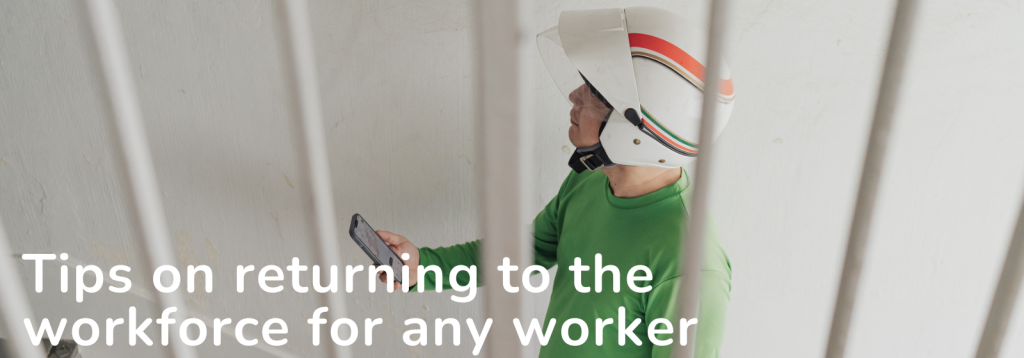According to Manpower Minister Tan See Leng in July last year, since the start of Covid-19, more than 15,000 workers had been placed in public sector or government-funded short-term roles.
These included SGUnited Jobs and Skills Package roles that supported operations such as swabbing, or quarantine procedures, assisting in patient services, or implementing safe management measures.
With Singapore winding down its pandemic measures in 2020, the need for such workers has lessened. For some of the 15,000, they return to their parent companies, such as Singapore Airlines flight attendants who worked as care ambassadors in hospitals.
Others, who may not return to their previous roles due to reduced demand or personal choices, can be helped by job matching services and the Ministry of Manpower’s ecosystem, Minister Tan shared.
Given that Workforce Singapore (WSG) and the Employment and Employability Institute collectively placed closed to 55,000 workers in suitable roles last year, he believes that it is “not beyond the ability of this network to facilitate their job search and to help them find placements in new sectors or activities where demand is rising.”
Gig workers matter too
It’s not just Covid-19 short-term workers who will receive help from the Government, of course.
During the circuit breaker, workers from the travel and tourism industries turned to food delivery gig jobs to boost their incomes. Others turn to freelance work while waiting for permanent employment, or use it to supplement their income while pursuing further education and passion projects.
According to the Ministry of Manpower, the number of freelancers in Singapore in 2019 came up to 211,000, about 10% of all employed residents, up from 200,000 in 2016, which shows a steady increase.
However, such workers may accumulate fewer contributions in their Central Provident Fund (CPF), which affects their retirement plans, healthcare savings and ability to buy their own homes.
According to Senior Minister of State for Manpower Koh Poh Koon earlier in April, an advisory committee set up by the government to review how to better protect gig workers received about 1,2000 submissions supporting mandatory contributions to their CPF.
“Housing was the most commonly cited reason for wanting CPF contributions, followed by retirement,” said Dr Koh, who is advising the committee.
If platforms have to pay for mandatory CPF contributions, business costs may rise, but Minister Koh believes that it makes them no worse off than other companies employing workers in similar sectors, such as logistics and transport.
“Besides, platform companies already contribute CPF for their management executives and administrative staff today – a point which many of these riders whom I engage with make as well,” he added.
“They ask a question: As the ones who are bringing revenue in for the company risking themselves on the roads, why are they not given some of these basic things that employees working for the companies in the office actually also enjoy?”
Of course, for gig workers who are looking to return to full-time or full-salaried positions, the same job matching and upskilling schemes and services from WSG and the Employment and Employability Institute will be there to aid their journey too.
Back-to-work-women warriors are increasing
The Covid-19 pandemic has certainly transformed work for everyone, with flexible work arrangements making motherhood, caregiving and career advancement no longer the separate life choices they used to be.
In fact, more than 68,000 women have received help from Workforce Singapore (WSG) and the National Trades Union Congress’ (NTUC) Employment and Employability Institute since 2019 to return to work, accounting for almost one in every two job placements by the WSG.
In order to support the remaining 85% of women to ensure that they can be matched with the right jobs that meet their personal and professional needs, WSG launched the herCareer initiative, bringing programmes and information for them under a new website.
At the launch in Bedok in June 2022, Minister of State for Manpower Gan Siow Huang said: “Some (women) actually may, by choice, want to stay at home to take care of family members, but we think a certain proportion may want to come back (to work) when they feel ready.”
If you’re a woman looking to return to the workforce, herCareer also provides services such as job-matching trials, career conversion training and placement, as well as job search guidance and job attachments!
Older workers are still gold
In July 2022, the Singapore National Employers Federation (SNEF) collaborated with the Ministry of Manpower to publish a career planning guidebook, to help employers engage senior workers on career and skills development.
It contains implementation rules, toolkits, individual career assessment exercises, sample human resource (HR) policies and case studies.
Clearly our silver workers matter, and for those looking to return to the workforce, you matter too!
If you haven’t heard, Minister Tan announced in Parliament plans to raise the retirement and re-employment ages in the country to 65 and 70 respectively. This is to support older Singaporeans who wish to continue working and also better prepare Singaporeans for retirement.
The process will start on July 1 next year, when the retirement age will be raised to 63 and the re-employment age to 68, he added.
Of course, there are always other options to choose from than full-time work. Some seniors start businesses after retirement, while others find part-time jobs.
At the end of the day, all workers matter, and the national aim is to aid everyone keen to be in the workforce to find a suitable role!
Minister Gan concluded at a WSG event: “We should embrace the multi-generational workforce by recognising the contributions of all employees – older workers bringing their wisdom and life experiences and complementing the skills of younger workers, who are often more technologically savvy and possess newer skills!”
To that goal, we have also pulled together relevant articles for workers and jobseekers from different backgrounds that will aid your job search. Happy reading and best of luck!

7 Types of Flexible Jobs For Singaporean Women Returning to Work After a Break
So the Retirement Age Got Raised. Here Are Some Jobs Where Old is Gold in Singapore
After a Career Break: Tips to Return to the Workforce
Job Hunting Strategies: What Works, And What Doesn’t, for the Long-Term Unemployed
These Singaporeans Had Job Search Challenges. Here’s How This Career Website Helped
Trying to Find a Job Quickly? Here’s How to Speed Up Your Job Search Strategy
Returning to Work After a Career Break: Jobs That Allow You to Juggle Caregiving at the Same Time
Ask a Career Coach: Is it OK to Take a Long Career Break?
4 Tips to Get You Back to Work After a Career Break
5 Tips for Women Looking to Return to the Workforce After a Mid-Career Break
Singaporeans Who’ve Made Career Comebacks, and How Reskilling and Upskilling Helps















